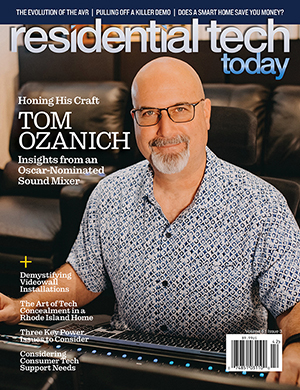Any level-headed business owner understands the importance of the customer experience. The great ones will take the steps necessary, and then some, to ensure theirs is above and beyond an exceptional one. That’s because they know, whether we’re talking general sentiment around the business, the close rate in their proposal process, how customers rate them online, and everything in between—a positive (or negative) experience has an impact on every facet of what they’re trying to build.
Of course, without data, those statements are nothing more than an opinion. Thankfully, there are studies out there to support the need for a positive customer experience. PwC’s “Experience is Everything” report showed us that 73 percent of customers say the experience is an important factor in their purchasing decision. Another 43 percent of consumers told PwC that they’d pay more for greater convenience.
In the custom integration and home automation world, then, the customer experience must be absolutely paramount. Not only does their experience with the integrator themselves matter—of course, you’re only going to want to allow someone into your home to install these products that you trust and have a positive experience with—but so too does the technology. The best experience throughout a project could be ultimately shattered if the tech installed fails to live up to the customer’s expectations. Or, on the flip side of that, tech that delivers on its stated promise could result in a customer for life, and one that will advocate on the business’s behalf to their family and friends.
Again, there’s data to support these claims. The Park Associates Smart Home Buyer Journey study found that 30 percent of smart home device owners discontinued use of a smart product because of a poor user experience.

To that end, I recently found myself in a situation where I nearly impulse moved to Indianapolis (sorry, wife and kids) because of the incredible experience I had touring the One-Touch Automation campus in Westfield, Indiana, about a 40-ish minute drive north out of downtown Indy.
During a recent trip there, One-Touch owner Ryan McDaniel—who started the business in 2006 alongside his wife Rachael—guided me through the three-building headquarters that he and his team have grown into over the years. Hearing the term “campus” you might think it’d be akin to a set of college education halls. This campus, rather, was more like a few fraternity houses next to one another with a large garage-turned-warehouse out the back door. But, in terms of fraternity houses, these would be a couple of the nicest and most teched-out you’ve ever set foot in.
Less empty red solo cups, more gadgets and high-end control experiences than you’d even know what to do with.
McDaniel explained that the One-Touch Experience House, where we started the tour, was actually the office for the company up until COVID.
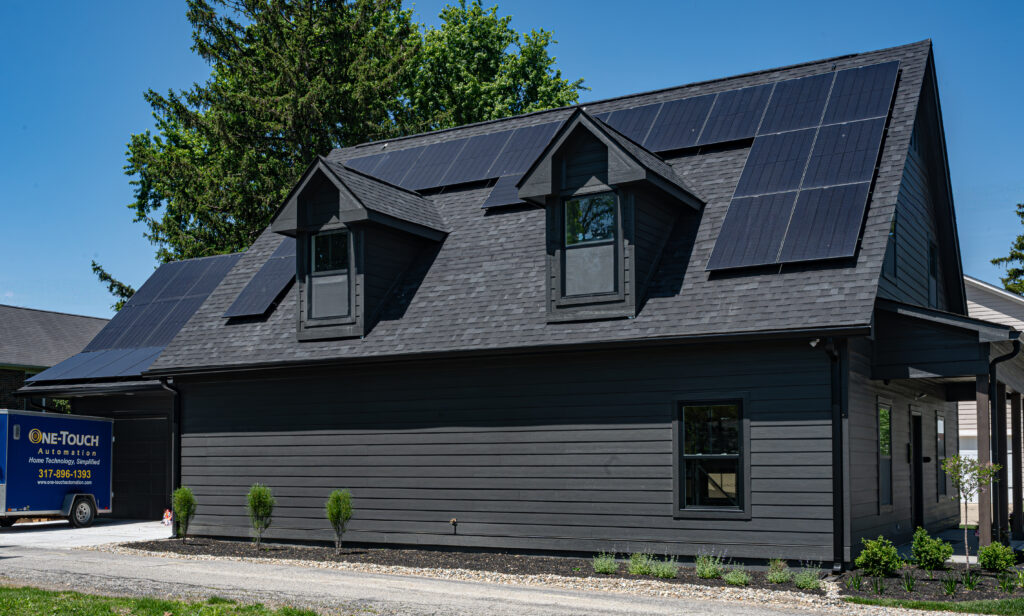
“We needed to move the business out of our basement, so we bought this building in 2015,” he told me. “We saw Westfield as an emerging city, and we were like, let’s go downtown before it becomes expensive, get a house, and make our office there.”
The office space was great, but One-Touch still needed an area where they could bring clients and show off their work. So, the company also maintained a roughly 400-square-foot experience showroom at the Indiana Design Center, about 15 minutes from where their office is located. It was a great space—when they were able to use it. McDaniel explained that during the pandemic, the design center shut down, and he wasn’t actually allowed to enter the building or the space that he was paying for. At the same time, the neighbors in the building next to their Westfield office were getting ready to put their building up for sale.
“I’ve always asked for the right of first refusal for that house,” he said “So when they went to put it up, they approached us, and ultimately they ended up selling me the house.”
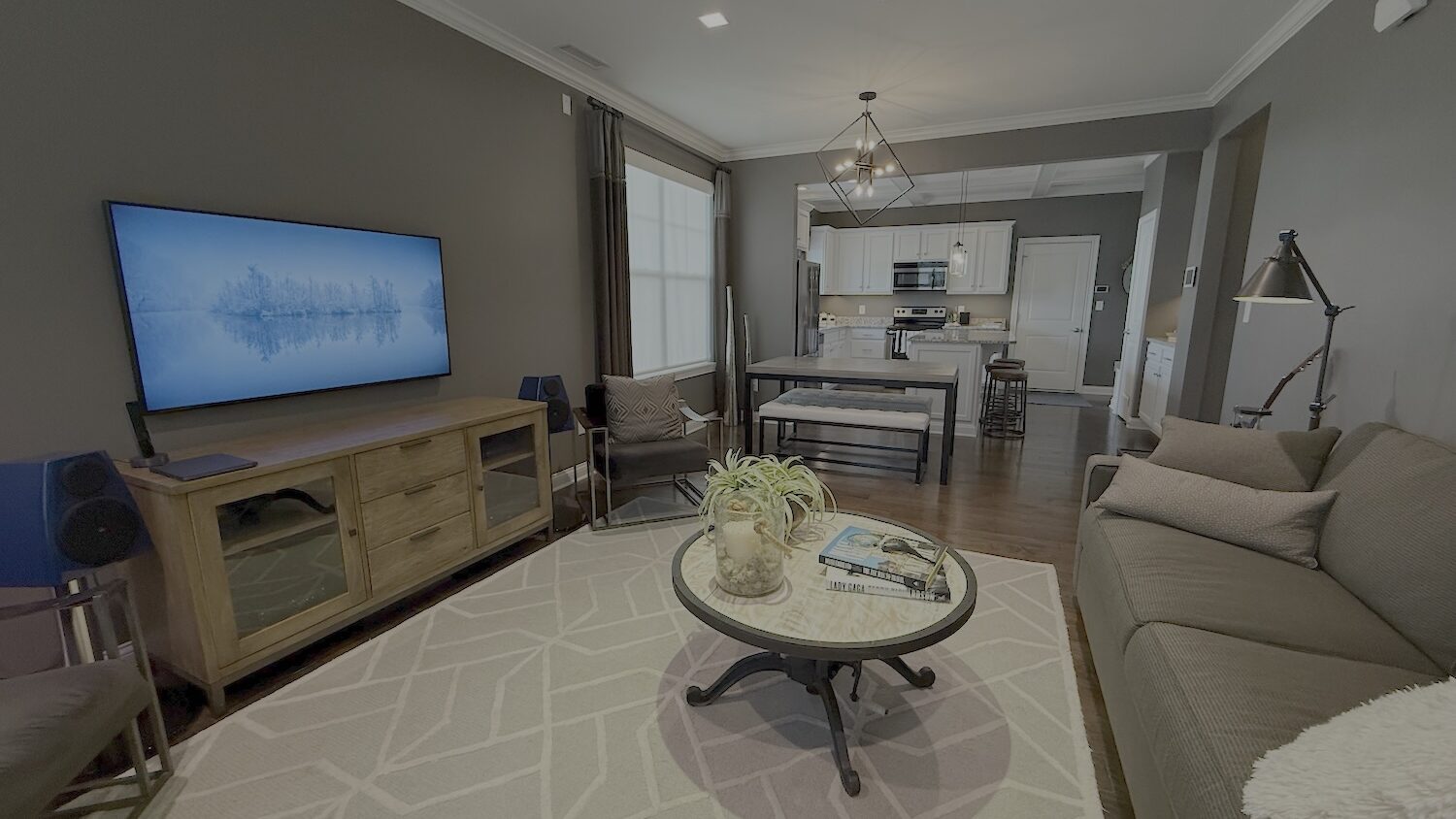
That simple move opened up a unique opportunity for Ryan and the One-Touch Automation team to do something incredible with their newly-expanded footprint. The offices were moved from the original house over to the second building. That allowed them to reimagine, essentially from the ground up, what an experience house for their company could look like. Effectively, they became their own client.
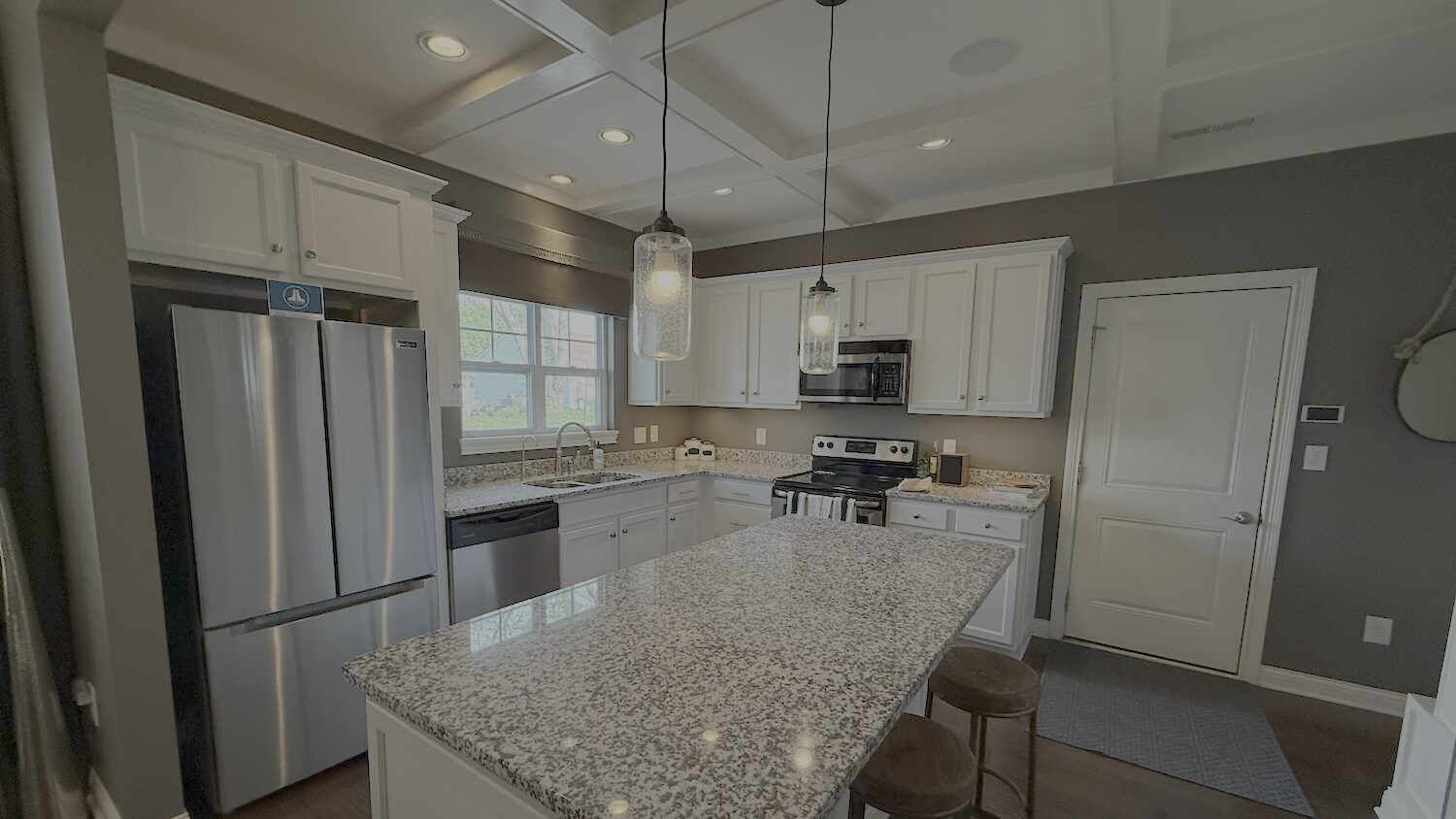
“The Design Center showroom was nice in that I could show off lighting and I could show off shading,” McDaniel said. “But there was so much more I wanted to do. We couldn’t show off home theater in there. I couldn’t get into the ceilings there to show off truly connected lighting. I can do all of that here and much more.”
And being able to showcase the full story of what home automation is, how it can improve, simplify, and make more efficient one’s residential environment is paying off for McDaniel and Co. Their average close rate for any project proposal is around 80-85 percent. When they take a client through the Experience Home the close rate jumps above 92 percent. Both are strong numbers, no doubt. But a 10 percent leap in success rate is still significant. Those proposals effectively become slam dunks.
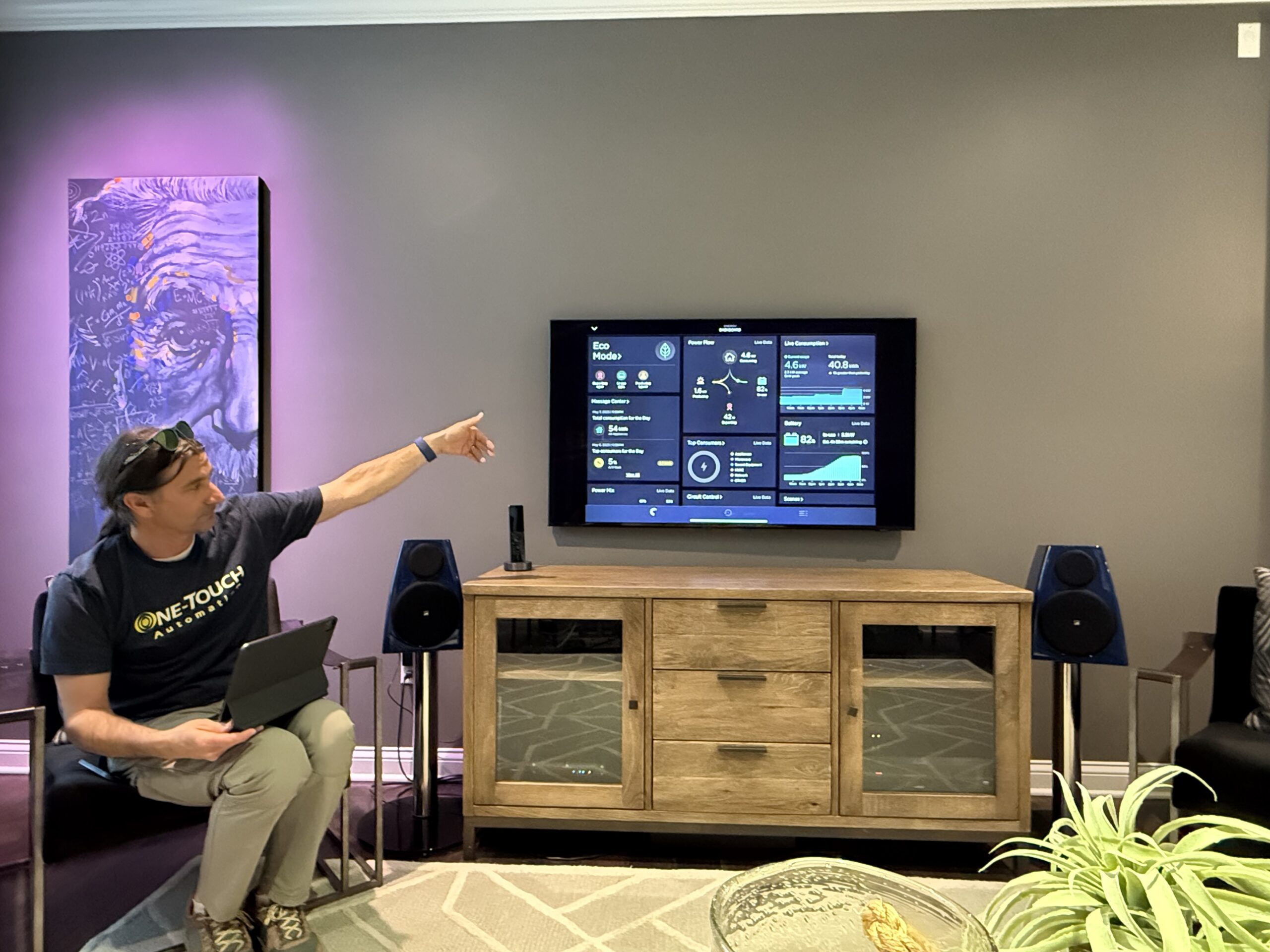
An Energizing Experience
The entertainment factor is great, and we’ll get into that. But the headline for this house, and the One-Touch Automation campus as a whole, is the fact that it is nearly entirely self-sufficient from an energy standpoint. Utilizing a combination of Savant Systems power solutions and solar panels on the redesigned and recently reopened warehouse, One-Touch has created a campus that just about powers itself.
“We really saw energy as an emerging trend, and we were like, we have to go after that market and really grasp it and learn it,” McDaniel explained. “The only way I can really do that is to live with it. So, now our buildings are powered off that. The warehouse is completely microgrid. It’s self-sufficient. The experience house can go until about 6 a.m. before it has to start pulling from the grid. So, all day long it runs off solar and then through the night until just before sunrise the batteries take over.”
That, alone, is an incredible feat just knowing how much energy the entire campus can pull at a given moment or during a demo. In the living room of the Experience House, McDaniel pulled up the Savant interface right on the TV, which showed how much energy different areas of the home were utilizing, what the biggest energy users were from an appliance standpoint, battery levels, live consumption data, and more.
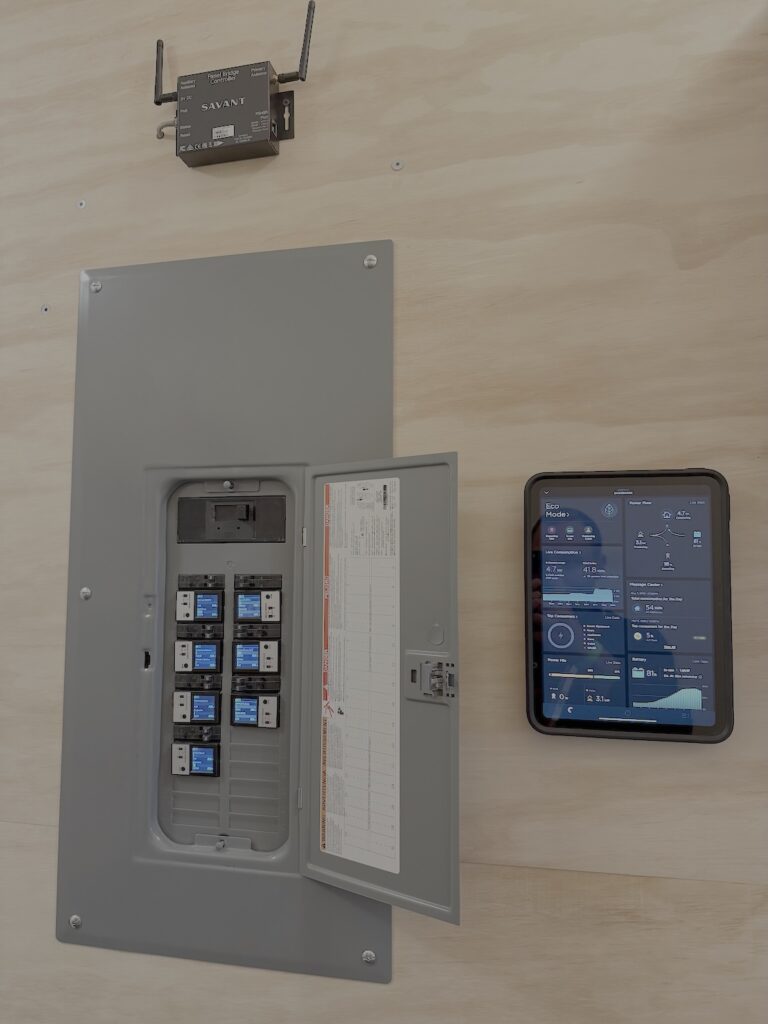
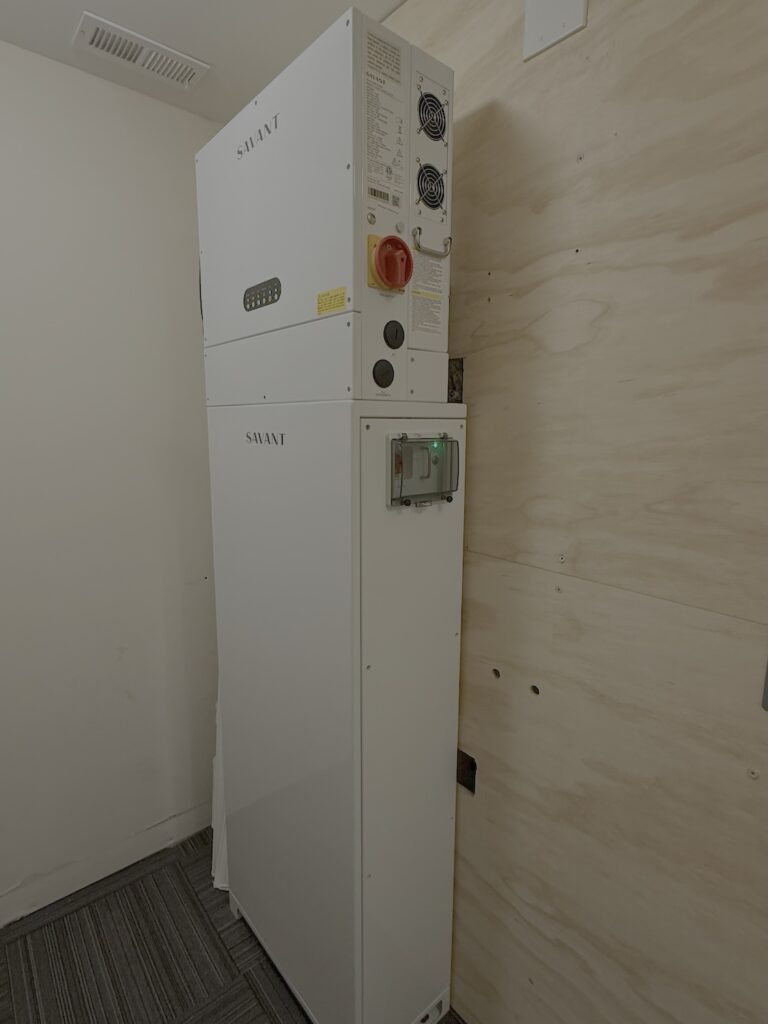
His team was also able to test the Storm Watch mode during a recent inclement weather event in the area. By flipping the home and warehouse into that preventative mode, the Savant system was able to monitor that forecast, charge up the batteries, and flip to battery mode when the power ultimately did go out—and they ran successfully until power was eventually restored a day later.
With energy consumption, monitoring, and costs being a growing concern among consumers, this was an area of this home that I was excited to explore, and it certainly exceeded my expectations from a pure capability standpoint. As McDaniel ran through the demo and continued pointing out areas throughout the campus where the Savant System was set up, it felt more like a “must have” feature in a home rather than something that’d be a “nice to have” upgrade.
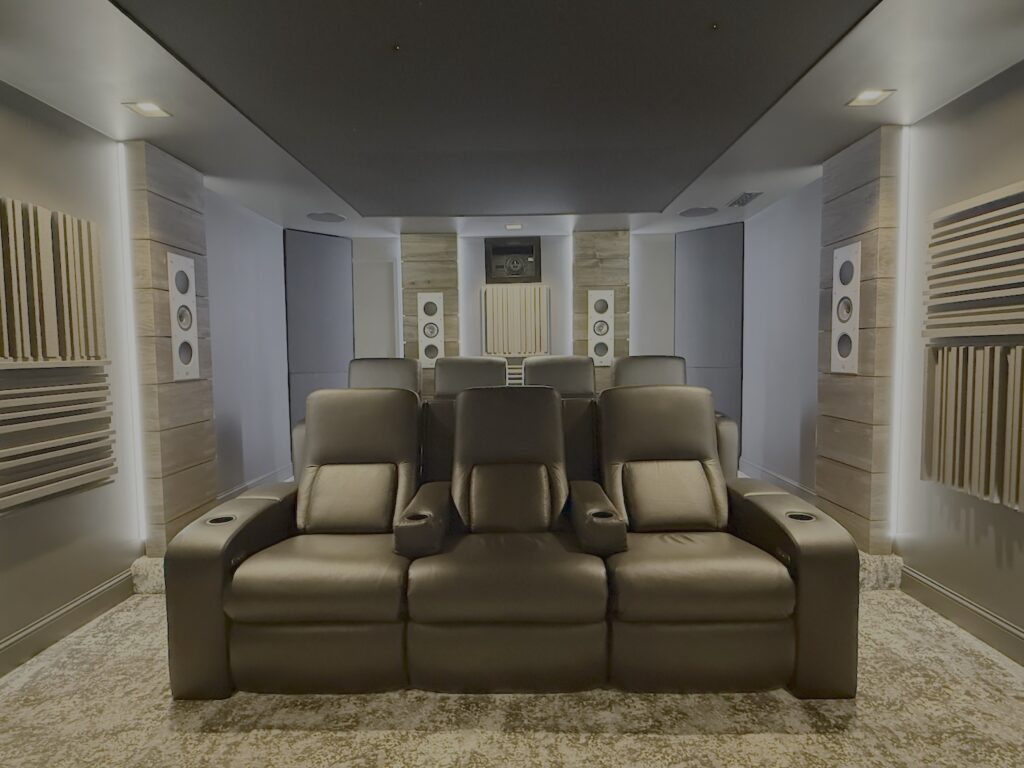
Jaw-Dropping Demos
Speaking of those “nice to haves,” the Experience House and other parts of the campus were chock full of them at nearly every turn. The two main “showpieces” of the house are the home theater and the two-channel audio room.
The theater experience starts before you even enter the room. A wall-mounted screen outside the room acts like a movie theater digital sign, displaying a “Now Showing” poster for whatever movie or show is actually playing inside the room. Then, a Future Automation automatic sliding pocket door opens up, welcoming you into the space.
The One-Touch team left no detail unaccounted for in this room—which, prior to the move, wasn’t even a room. McDaniel explained that the space was a loft area and separate bedroom. After removing and reconfiguring a few walls, they created this space for themselves, allowing them to build a true theater room in their vision.
That vision includes every bit of top-shelf technology you’d expect in a fully custom home theater. A Barco projector housed in a custom cabinet room to reduce the potential for noise spilling out into the theater area, a Display Technologies custom screen and port glass, unbelievably comfortable Fortress seating, KEF speakers, JL Audio subwoofers, acoustical treatments by Auralex, sound isolation and a unique (and acoustically functional) starry ceiling treatment by Kinetics, processing and amplification from Acurus, a Kaleidescape server that runs through a MadVR video processor—the list goes on.
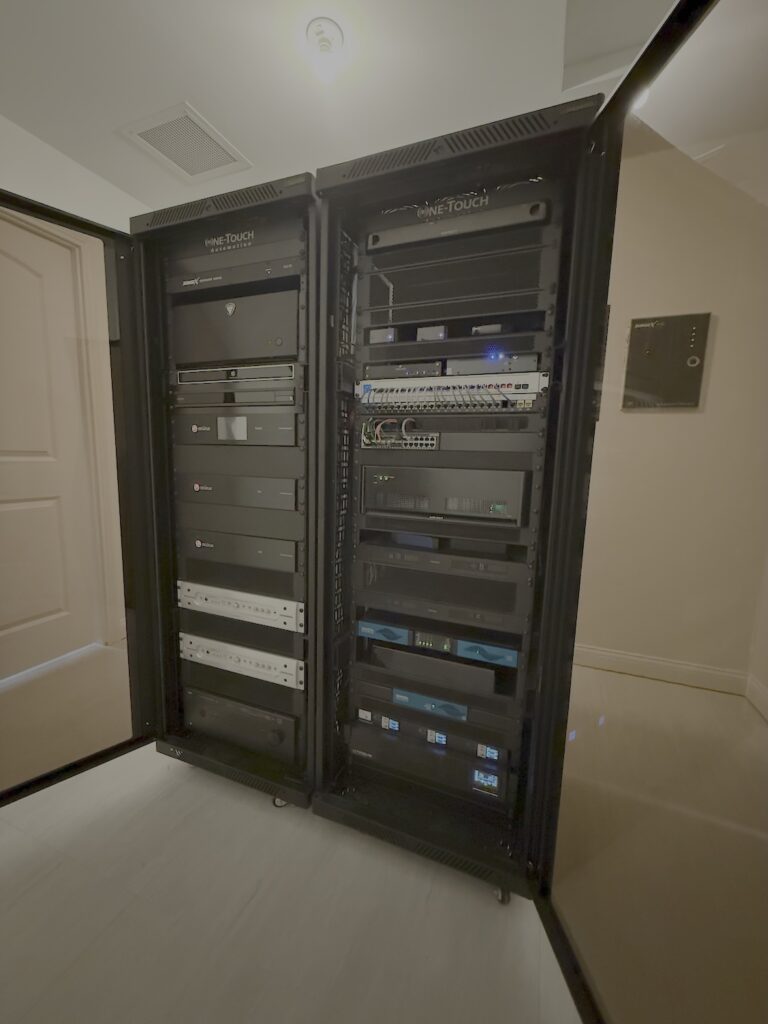
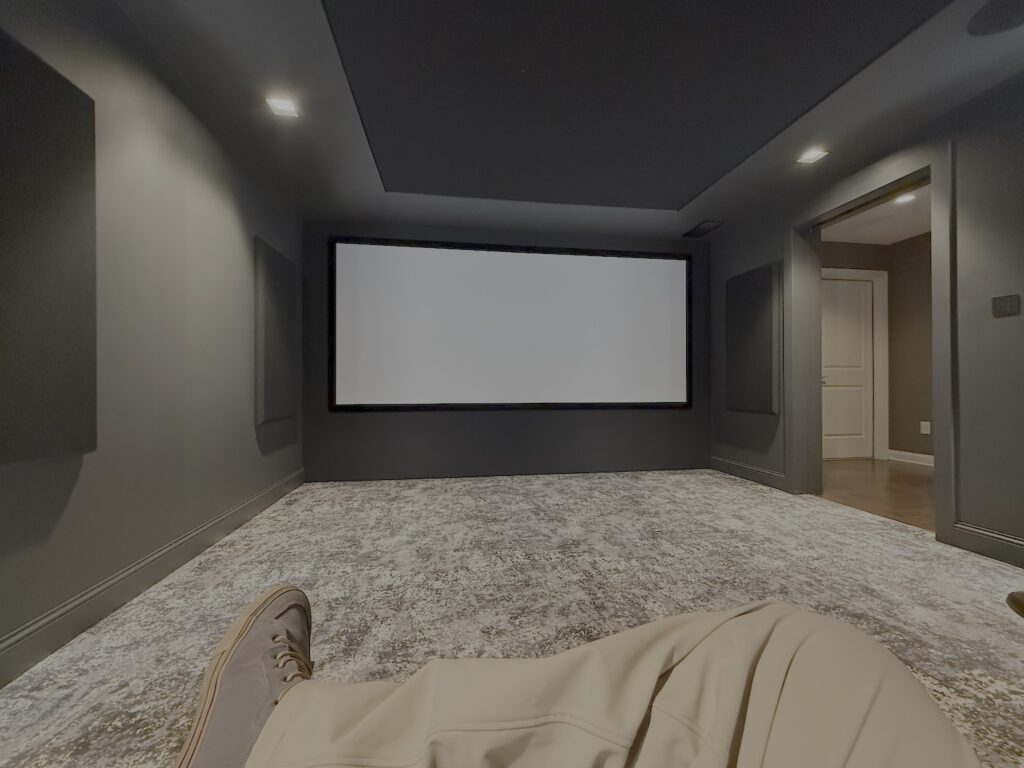
What you get from all of that, though, is one of the most incredible home theater demo experiences I’ve ever sat through. Everything about the space was considered as it was built. The pieces all come together and create a memorable experience that, I can imagine, would make any potential client become a guaranteed one. Whether it was a live concert clip or a scene out of Ford vs. Ferrari, it felt like you were in the crowd or riding shotgun next to Christian Bale. A completely immersive experience that had me completely gripped and not wanting to leave.
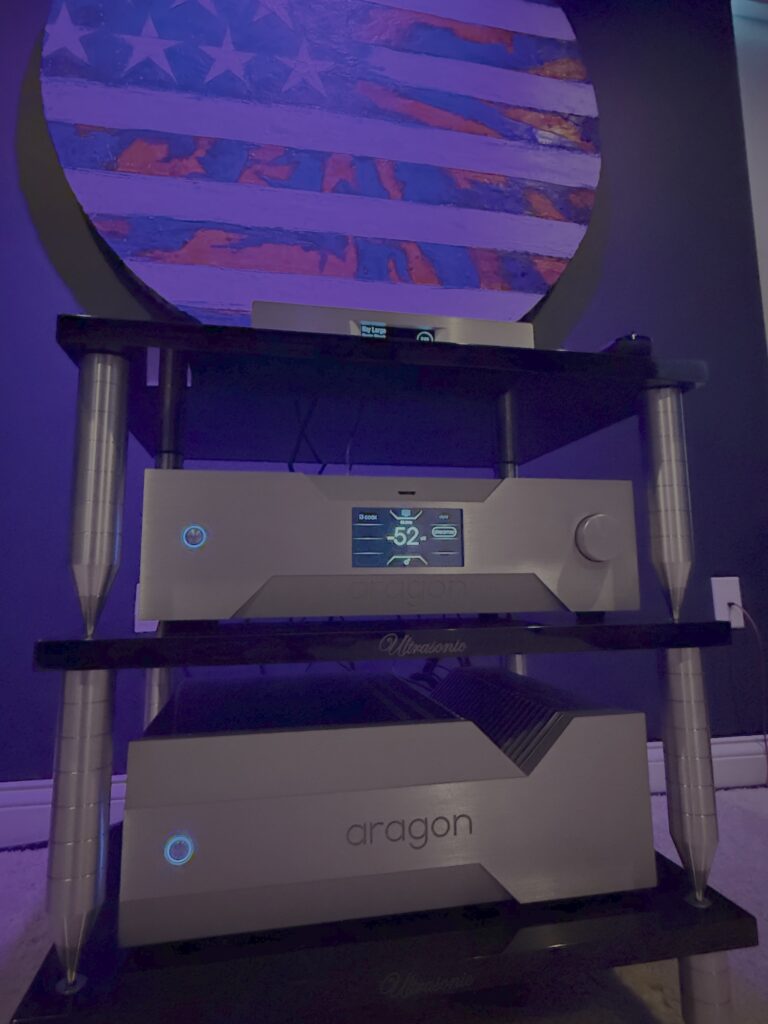
The move over to the two-channel room was equally as impressive, though. Ryan and his team put together an unbelievable set up in this room that, again left me in an entranced state, consumed by the audio produced in front of (and around) me. The room features a set up that was curated by Indy Audio Labs and includes Aragon’s Tungsten preamplifier and Titanium amplifier that help power a set of Totem Element Metal v2 speakers and produce an otherworldly audio experience. The musical notes hit you from every direction, putting you seemingly on stage as the guitar chords are strum in front and the bass from the kick drum hits behind you.
The soundfield reproduction was unique in and of itself, but One-Touch cranks it up another notch with the ambiance the room is set to. Low lighting cools the mood, and a warm spotlight on a gorgeous piece of locally produced art sets a calm mood that allows the beat to transport you straight into the track. I, again, had to be peeled off of the center-placed chair in order to experience the rest of the property.
Their entertainment floor, to put it mildly, was incredibly well done.
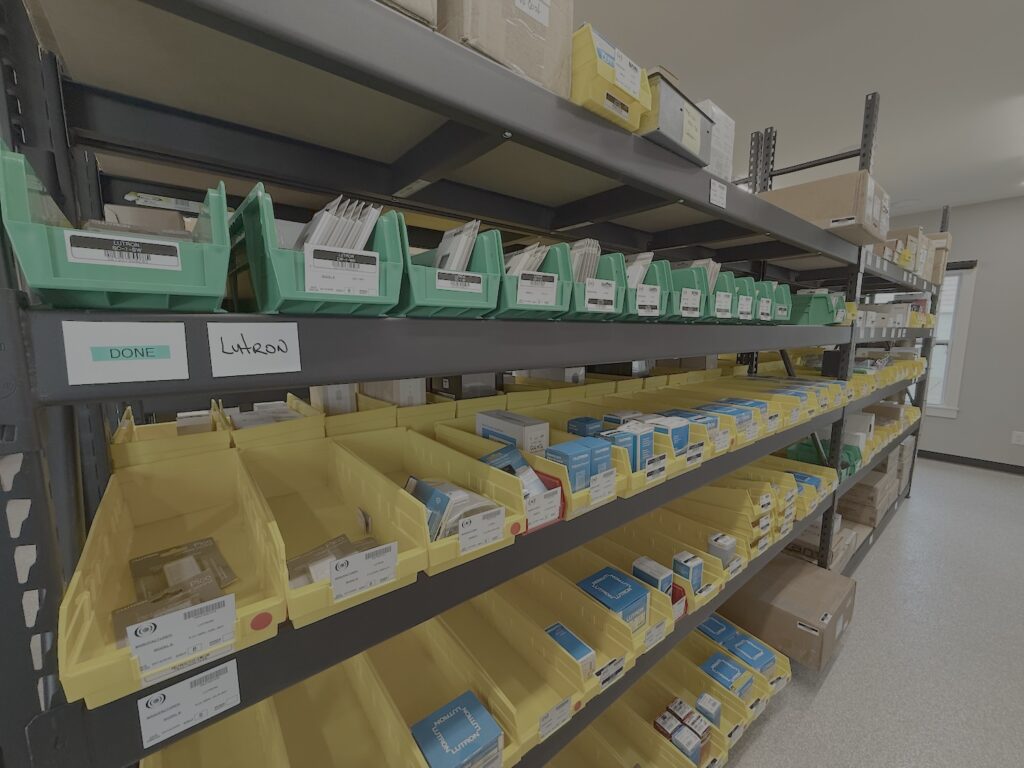
Benefits the Business
Having walked and experienced just about every corner of the campus, the takeaways are obvious: This is more than just an awesome showpiece for the One-Touch Automation team. Having this campus is great for bringing in and impressing potential clients. But there’s so much more to it than that. This space provides opportunities for their team to engage with the community (we talked about the chance to host industry partners and the builder and design communities for events) and expand their reach.
Not to be overlooked is the pure training aspect for their own team. Yes, they have several classroom-style spaces where they can get together and meet like a team. But this is a functioning home, which means they have the chance to get their hands on new product and train themselves on how to install it without having to learn on the fly in a customer’s home.
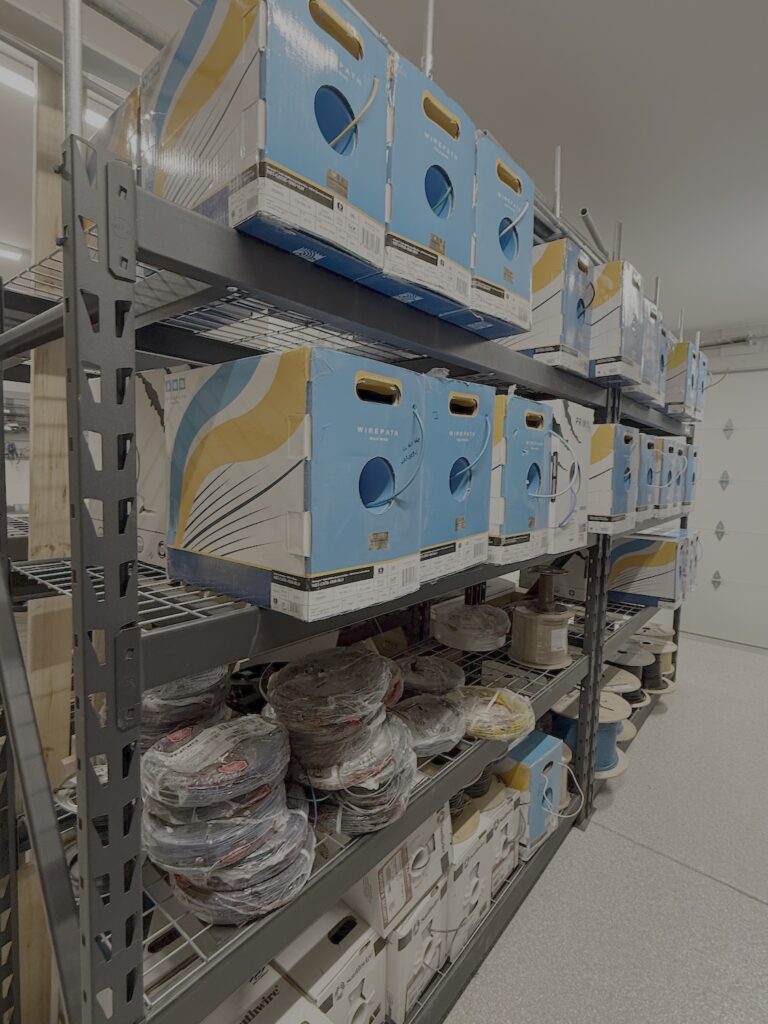
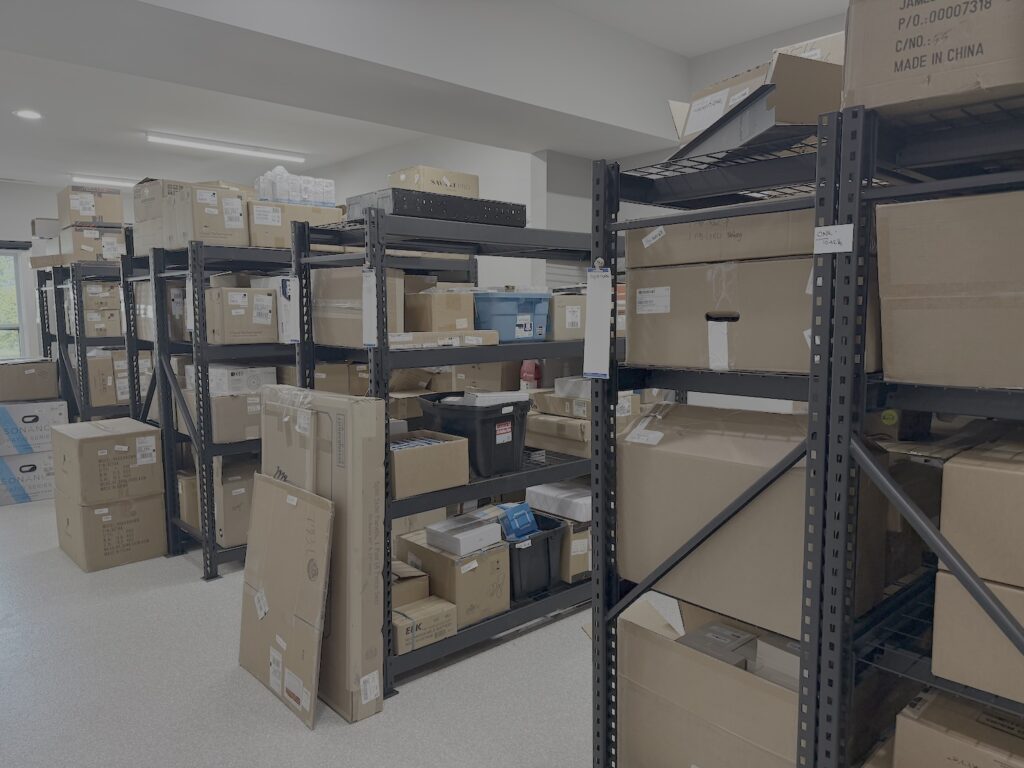
And then there’s the warehouse. Just reopened, the space is an OCDers personal haven. It’s laid out in a way that keeps all the components for active projects together and well-organized. But it also feels like a mini hardware store in there with color-coded shelving and storage units for those often-used items and other gizmos that would otherwise be kept on a truck in some random drawer somewhere. Here, they can keep track of inventory and know what they need, when they need it.
“It’s allowed our business to become more efficient and more organized,”McDaniel said of the new space. “You can already see how we’ve grown into this new space, we’re able to store more in here for the projects we have going on, and it keeps us ready for what’s next. But we’re already pushing at the walls and filling it up.”
A very good problem to have for a team that’s helping Hoosiers find efficiency and simplicity in their own homes and lives.





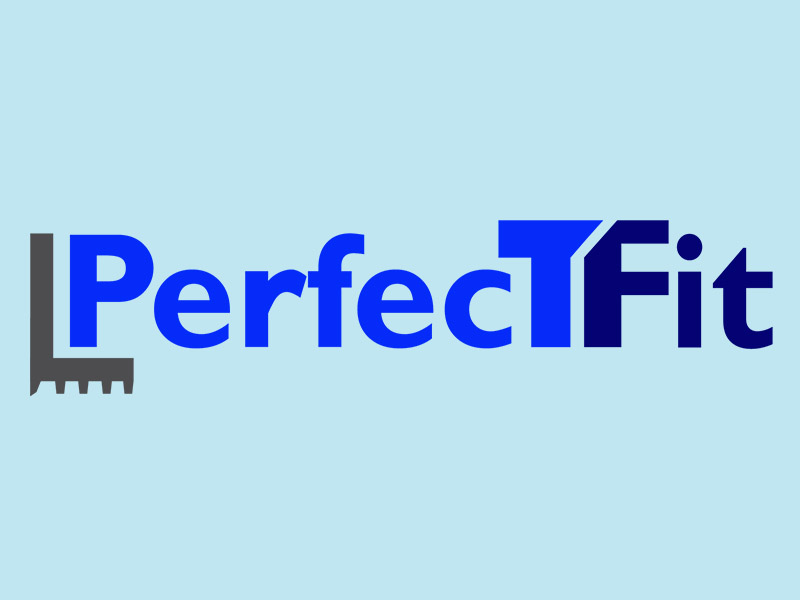
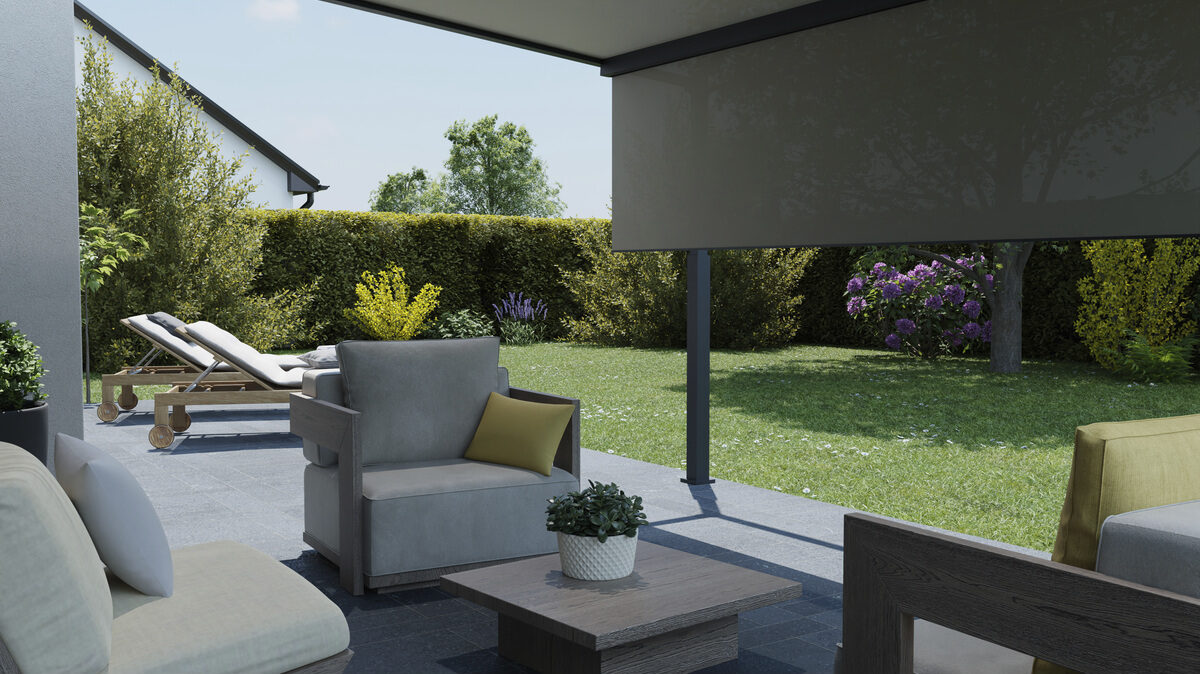
![ecobee premium airzone control The ecobee Smart Thermostat Premium. [Photo credit | ecobee]](https://restechtoday.com/wp-content/uploads/2025/06/ecobee-premium.jpg)
![Hub 3_02 The SwitchBot Hub 3 provides a user-friendly solution to the growing complexity of modern smart homes. [Photo credit | SwitchBot]](https://restechtoday.com/wp-content/uploads/2025/06/Hub-3_02-scaled-e1750179791687.png)
